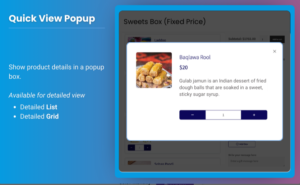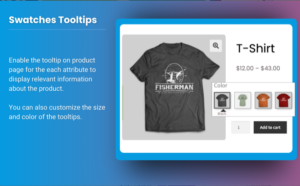When managing a large online store, especially one built on WooCommerce, maintaining an extensive product catalog can quickly become overwhelming. One of the most efficient ways to manage thousands of products is through a WooCommerce CSV upload. This method allows you to import bulk product data, saving you hours of manual data entry. However, optimizing the CSV upload process for large product catalogs is essential to ensure smooth operation and avoid common pitfalls like errors, slow uploads, or timeouts.
In this article, we will walk you through how to optimize your WooCommerce CSV upload for large product catalogs. We will explore best practices, tools like a WooCommerce file upload plugin, and additional tips to ensure a seamless import process. Whether you’re dealing with thousands of simple products or complex variable items, this guide will help streamline the process.
Why Use CSV Uploads for Large Product Catalogs?
Managing a large inventory manually is time-consuming and prone to errors. Whether you’re adding new products, updating existing ones, or removing obsolete items, CSV uploads offer an efficient solution. CSV (Comma Separated Values) files are an industry-standard for bulk data imports because they’re lightweight, easy to edit, and compatible with most eCommerce platforms, including WooCommerce.
Benefits of Using CSV for WooCommerce:
- Bulk Import: Easily import hundreds or thousands of products at once.
- Error Reduction: Minimize human error by automating data entry.
- Flexibility: Edit CSV files in spreadsheet programs (e.g., Microsoft Excel, Google Sheets) before uploading.
- Cost-Effective: No need for expensive software; CSV files can be generated using free tools.
However, large product catalogs often come with their own set of challenges, such as timeouts, broken imports, or incorrect data formatting. Optimizing the upload process ensures that your product catalog is updated correctly and quickly without unnecessary headaches.
Best Practices for WooCommerce CSV Uploads
To make the most of WooCommerce CSV upload, here are some essential best practices you should follow:
1. Split Your CSV Files into Smaller Batches
One of the most common issues when uploading a large product catalog is timeouts or the file being too large for the server to handle. If you’re uploading a CSV file with thousands of products, consider splitting the file into smaller batches.
- Segment by Categories: If possible, break your CSV file by product categories or product types (e.g., clothing, electronics). This way, the file size remains manageable, and the upload process will be more stable.
- Limit Rows per File: While WooCommerce can handle a large number of rows, breaking your upload into 500-1,000 rows per file will speed up the process and help avoid any server limitations.
2. Use a WooCommerce File Upload Plugin
When dealing with bulk uploads, a WooCommerce file upload plugin can significantly improve the process. These plugins can handle larger files, provide more customization, and even add extra fields to the CSV for more complex product attributes.
- Extended Functionality: Many plugins can extend the capabilities of the native WooCommerce CSV importer. They allow you to map custom fields, manage inventory, and even update products in bulk.
- Improved Handling of Errors: Plugins can show detailed error logs, which help you troubleshoot if something goes wrong during the upload.
Popular plugins like Product CSV Import Suite by WooCommerce and WP All Import allow for better control, advanced features, and can even schedule imports to run during off-peak hours to reduce server strain.
3. Optimize CSV File Format
The structure of your CSV file is critical to a successful import. Below are some tips for ensuring your file is properly formatted:
- Proper Columns: Ensure that your CSV file includes the correct columns for all product data. This typically includes the product name, description, SKU, price, stock status, and categories.
- Remove Unnecessary Data: Keep your CSV file clean by removing unused columns or rows. Unnecessary data can slow down the import process and even cause errors.
- Use Simple Text Encoding: Save your CSV file in UTF-8 format to avoid issues with special characters or language support.
4. Clean Your Product Data
Before uploading your CSV, ensure your product data is accurate and consistent. Clean data reduces the chances of errors and product mismanagement.
- Consistent Naming Conventions: Make sure that SKUs, product names, and categories are named consistently. For example, if you’re using product variations (like sizes or colors), ensure they are standardized.
- Check for Missing Fields: Missing product details, such as price or stock information, can result in incomplete imports. Double-check that every required field is filled in.
5. Test with a Small Batch First
Before uploading your entire product catalog, always test the process with a small batch of products. This allows you to identify and correct any issues early on, without risking the integrity of your entire catalog.
- Test with 10-20 Products: Upload a small file with a few products first to see if everything works as expected.
- Check for Errors: After importing, check for any missing images, broken links, or other inconsistencies. This will give you a clear idea of what needs to be addressed before importing larger files.
6. Disable Unnecessary Plugins
Some plugins can slow down the upload process, particularly those that add extra functionality to WooCommerce, such as SEO plugins, image optimization plugins, or caching plugins. For faster uploads:
- Deactivate Unnecessary Plugins: Temporarily deactivate any plugins that aren’t essential for the upload process.
- Optimize Your Server: Ensure your server is capable of handling large file uploads. This may involve upgrading your hosting plan or optimizing your server settings.
7. Increase Server Limits
For large imports, you may need to adjust your server’s PHP settings. WooCommerce and WordPress, by default, impose certain upload size limits. Increasing these limits can ensure your upload proceeds without issues.
- Max File Upload Size: Increase the file upload size limit in your hosting provider’s control panel.
- Max Execution Time: Adjust the execution time settings to allow longer processing times for large imports.
- Memory Limits: Increase the PHP memory limit to handle larger file sizes.
These changes may require access to your hosting provider’s settings, so be sure to consult with your hosting support team if you’re not sure how to proceed.
Additional Tips for Successful CSV Uploads
Use the Right File Type
While CSV is the most common file format for imports, WooCommerce also supports other formats, such as XML and JSON, through different plugins or APIs. If your product data is already in another format, consider converting it into CSV for simplicity.
Automate Regular Imports
For stores that frequently update product catalogs, automating the import process can save time. Plugins like WP All Import can schedule automatic imports at set intervals, ensuring your product catalog is always up-to-date.
Backup Your Data
Before uploading large batches of data, always back up your store’s data and database. If something goes wrong, you’ll be able to restore your products without losing any critical information.
FAQs
1. What is a WooCommerce CSV upload?
A WooCommerce CSV upload is a process that allows you to import product data in bulk to your WooCommerce store using a CSV file. It’s an efficient method for updating or adding large quantities of products to your online store without manual entry.
2. Why should I use a WooCommerce file upload plugin?
A WooCommerce file upload plugin can optimize the CSV import process by offering advanced features such as handling larger files, customizing product data fields, and ensuring smoother imports. It also provides better error handling and troubleshooting options.
3. How do I prevent errors during a WooCommerce CSV upload?
To prevent errors, ensure your CSV file is properly formatted, your server settings allow larger uploads, and your data is clean and consistent. You can also test the process with a small batch before doing a large import.
4. Can I automate CSV imports in WooCommerce?
Yes, you can automate CSV imports using plugins like WP All Import, which allow you to schedule regular imports to keep your product catalog updated without manual intervention.
5. How can I handle a large WooCommerce product catalog more efficiently?
By splitting your product catalog into smaller CSV files, using a file upload plugin, optimizing your server settings, and keeping your product data clean, you can efficiently manage and import a large catalog without running into issues.
Conclusion
Optimizing WooCommerce CSV uploads for large product catalogs doesn’t have to be a daunting task. By following these best practices, such as splitting your CSV into manageable chunks, using a WooCommerce file upload plugin, and cleaning your product data, you can ensure a smooth, error-free import process. With the right tools and techniques, you can streamline the management of your product catalog, saving time and reducing the risk of errors.
For stores with very large inventories, consider brands like Extendons, who offer powerful import/export solutions that go beyond basic CSV uploads, giving you more flexibility and control over your product data.
By implementing these strategies, you can significantly enhance your WooCommerce experience and focus on growing your business instead of getting bogged down by technical issues.














